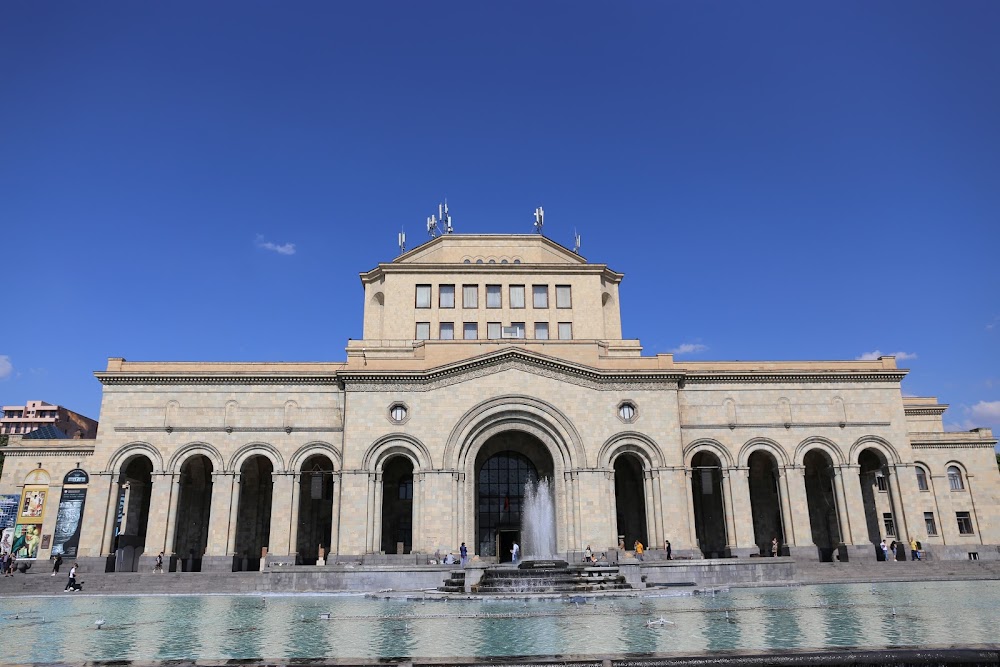Blue Mosque (Կապույտ Մզկիթ)
Overview
The Blue Mosque in Yerevan, Armenia, is a stunning testament to the city's rich history and cultural diversity. Constructed during the Persian occupation in the 18th century, this mosque remains the only operating mosque in the Armenian capital today. Built between 1764 and 1768 under the orders of Husayn Ali Khan, the Khan of Erivan, the mosque was intended to serve as a central place of worship for the local Muslim community.
The architectural style of the Blue Mosque is a remarkable representation of Persian Islamic architecture. Its most striking feature is the magnificent blue-tiled dome, which lends the mosque its name. This dome is adorned with intricate patterns and calligraphy, showcasing the masterful craftsmanship of its builders. The complex also includes a series of smaller domes, elegant minarets, and a spacious courtyard, all surrounded by beautifully landscaped gardens that enhance the serene atmosphere.
Inside, the main prayer hall is both impressive and inviting. High ceilings with elaborate stucco work, large chandeliers, and a mihrab—a niche indicating the direction of Mecca—transform the hall into a functional space for worship as well as a stunning piece of art. The walls and ceilings are adorned with traditional Persian tilework, featuring floral and geometric patterns in beautiful blue and white hues, a hallmark of Islamic art.
Historically, the Blue Mosque was not just a spiritual haven; it also served as a center for education and community activities. Attached to the mosque was a madrasa (Islamic school) where students studied the Quran, theology, and various other subjects. This made the mosque an essential institution within the Muslim community in Yerevan, providing both religious and educational services.
During the Soviet era, the Blue Mosque faced challenges as religious practices were discouraged. Many places of worship were repurposed or neglected, and the mosque was converted into a museum, serving different secular purposes. However, following the fall of the Soviet Union and Armenia's independence in the early 1990s, the mosque experienced a revival. Significant restoration efforts were initiated, with the Iranian government playing a crucial role in returning the mosque to its former glory.
Today, the Blue Mosque operates as both a place of worship and a cultural monument. It warmly welcomes visitors from around the world who wish to admire its stunning architecture and delve into its rich history. The mosque stands as a symbol of Yerevan's multicultural heritage, representing the harmonious coexistence of various religious and cultural communities over the centuries.
Walking through the gates of the Blue Mosque, visitors are instantly transported back in time. The tranquility of the courtyard, with its bubbling fountains and the scent of blooming flowers, provides a peaceful retreat from the bustling city. The call to prayer can still be heard, echoing through the minaret and reaching the hearts of those who come to pray.
The Blue Mosque is more than just an architectural marvel; it is a living piece of history. It serves as a reminder of Yerevan’s diverse cultural tapestry and the enduring legacy of the Muslim community in Armenia. Preserved with care and respect, this mosque not only honors its past but also embraces its role in the present and future, inviting everyone to experience its beauty and significance.







